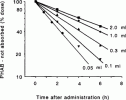Here2Learn
Member
I’ve been reading studies on GLP’s and found this interesting. Just data points. I read another one saying those who are sicker or had early childhood obesity or trauma had higher rates of non response too.
Quote from study
“Conclusions
A high HbA1c at baseline and previous non-insulin therapy were the main predictors of a greater response (optimal HbA1c and weight response) to GLP1ra in both men and women. This may aid in treatment decision-making before initiating treatment with GLP-1RAs.”
Quote from study
“Conclusions
A high HbA1c at baseline and previous non-insulin therapy were the main predictors of a greater response (optimal HbA1c and weight response) to GLP1ra in both men and women. This may aid in treatment decision-making before initiating treatment with GLP-1RAs.”


